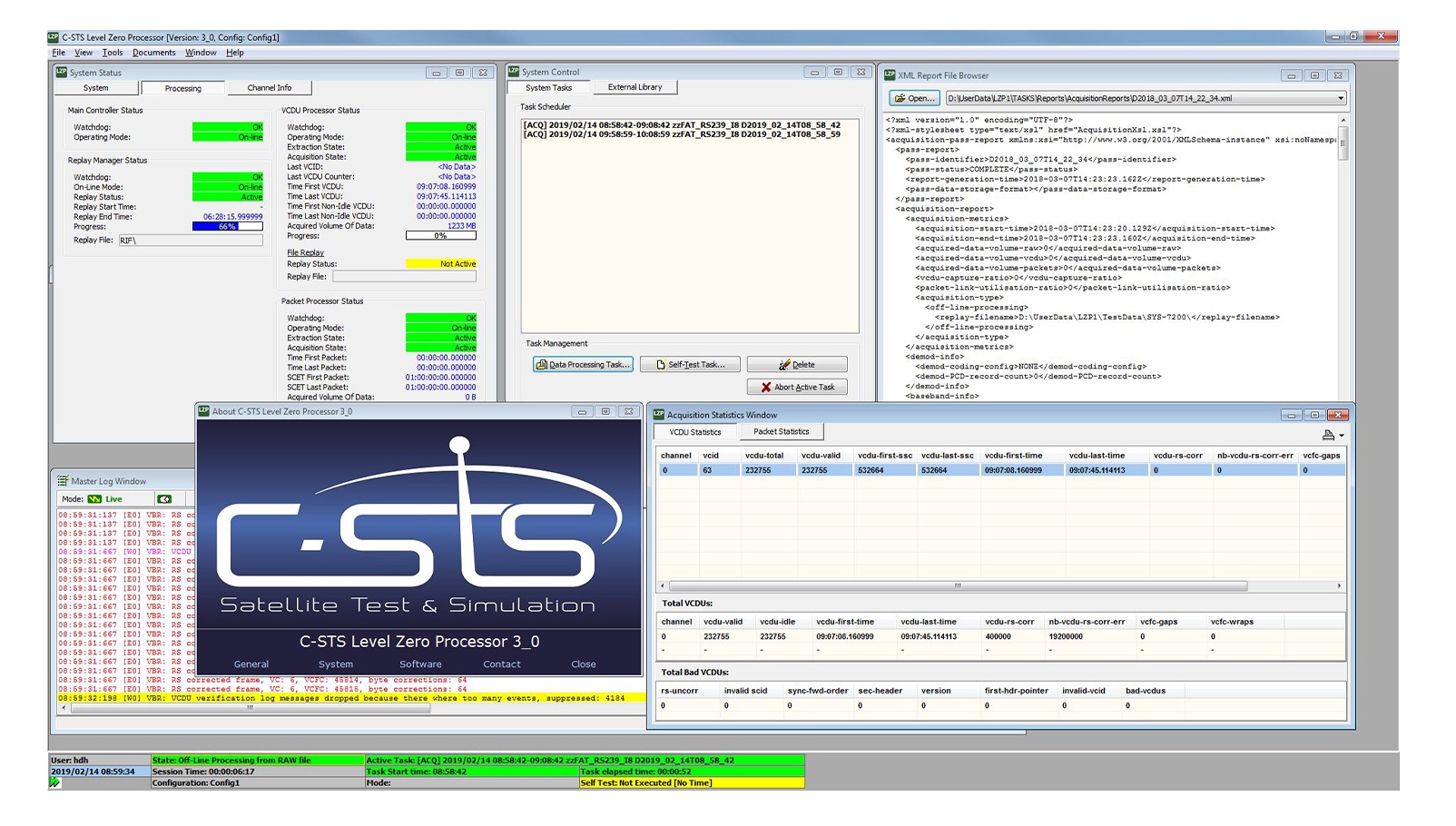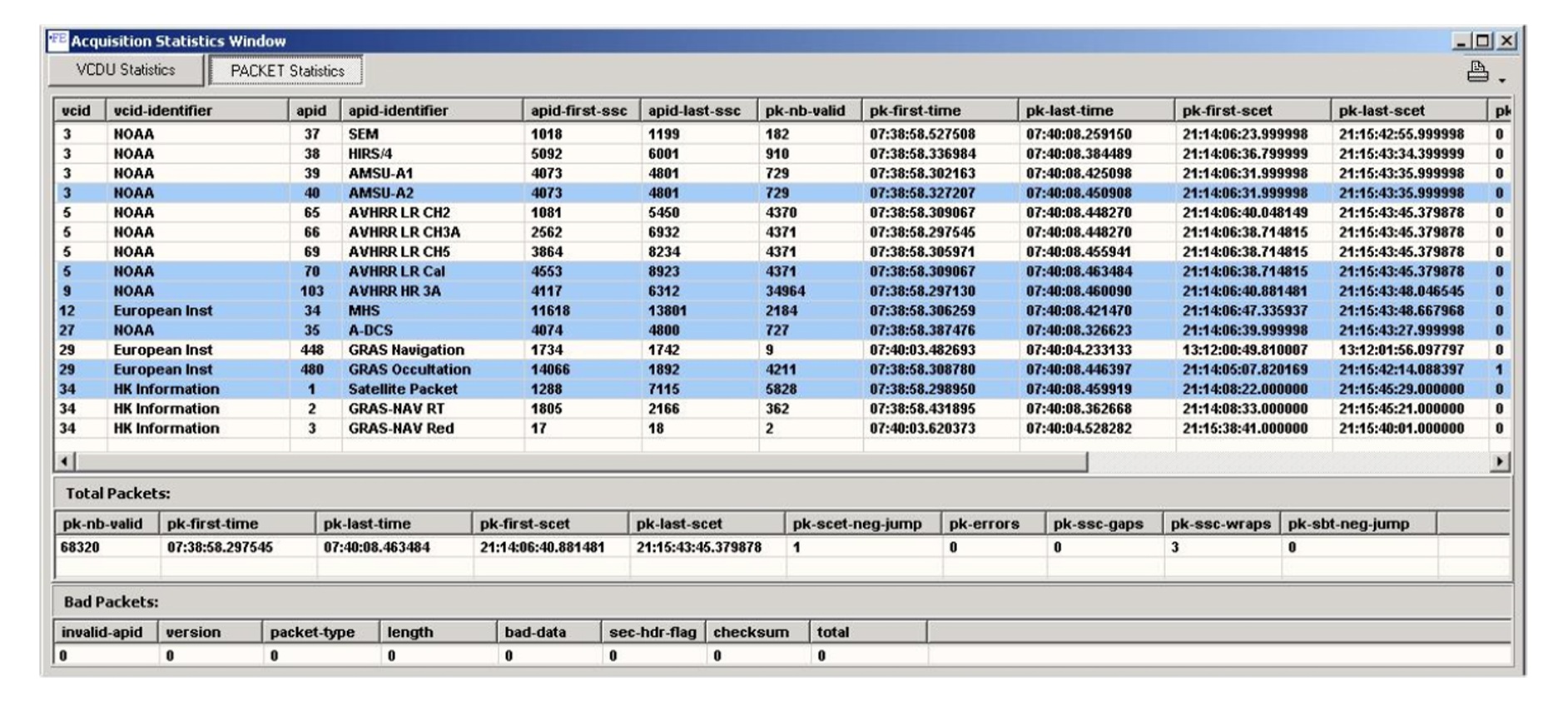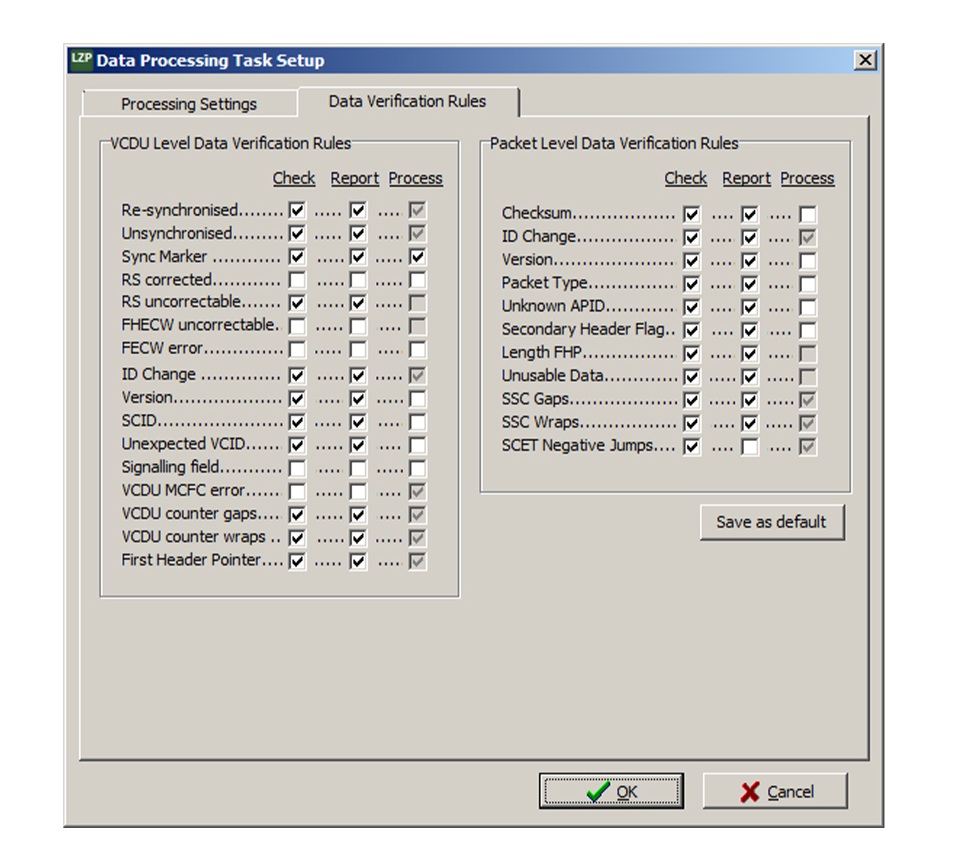Key Features
- Ingestion of data directly from the local disk drive or shared (CIFS or NFS) network drives
- User Configurable Frame and/or Packet Output Data storage and organisation rules
- User Configurable Frame and/or Packet Checking Rules
- Real-time Frame and/or Packet distribution via LAN
- Real-time statistical analysis, error checking and reporting
- Reporting of processing results using XML files
- Data Processing via ‘task’ files in inbox directory (XML or INI format)
- Configuration of the automatic Disk Cleanup functions.
- Provision of local Graphical User Interface to control and monitor the LZP
- Remote interfacing support (such as EDEN, C&C, etc.)
- Processing performance up to 2Gbps (125MByte/s)
- The Level Zero Processor is designed against the following standards/recommendations
Processing of TM data from bitstream to Frame and Packet level (or intermediate):
- Data Ambiguity Resolving (BPSK, QPSK, 8PSK)
-
- Programmable Frame Synchronization (1-8 bytes, bit masking, sync/unsync thresholds)
- Convolutional Decoder (1/2 rate, incl puncturing)
- Arbitrary length VCDUs / CADUs (length in bits)
- De-randomizer (ECSS/CCSDS and Custom)
- RS detection/correction (RS [255,223] and [255,239], Interleave Depths 1, 2, 3, 4, 5 or 8 and Virtual Fill)
- Local or Remote Frame or Packet Deciphering (such as AES-256)
- AES256/128 Decryption (standard supported modes are OFB, CTR, CCM and GCM)
- CFDP Class 1 (unacknowledged) and 2 (acknowledged) processing
-
The Level Zero Processor is designed against the following standards/recommendations
- Telemetry Synchronization and Channel Coding, ECSS-E-50-01C
- TM Synchronisation and Channel Coding, CCSDS-131.0
- TM Space Data Link Protocol, CCSDS-132.0
- Space Packet Protocol, CCSDS-133.0
- AOS Space Data Link Protocol, CCSDS-732.0
- Advanced Encryption Standard (AES), FIPS PUB 197
- Block Cipher Modes of Operation, 800-38A
- CCSDS File Delivery Protocol, CCSDS 727.0-B5




